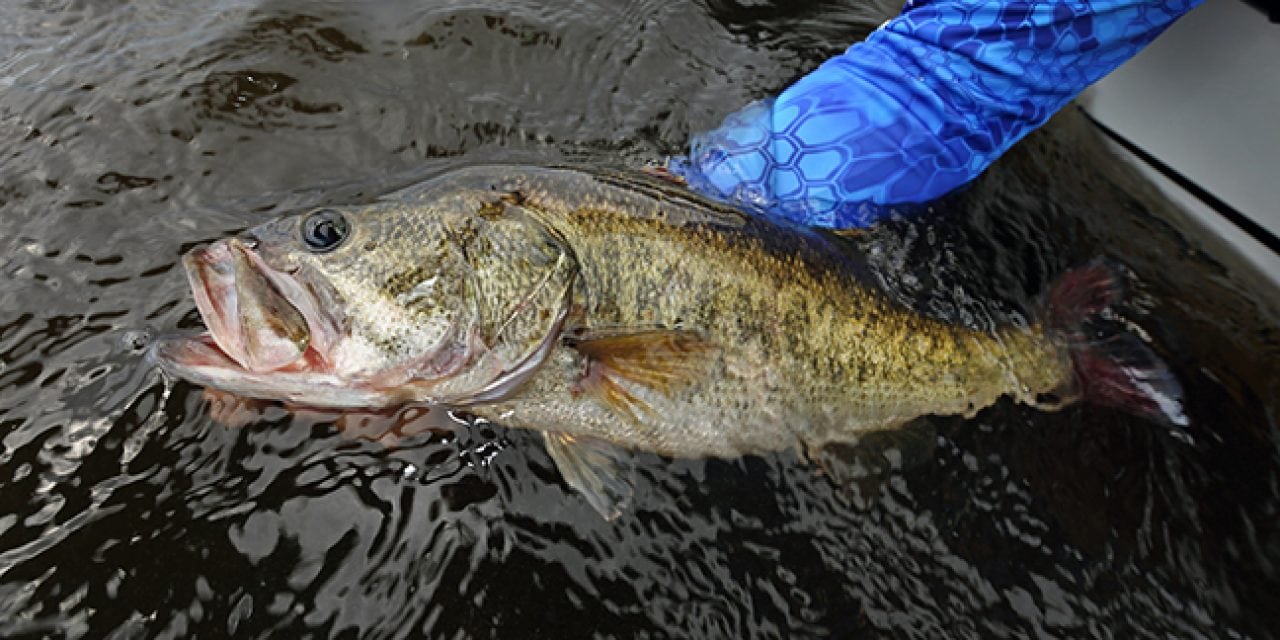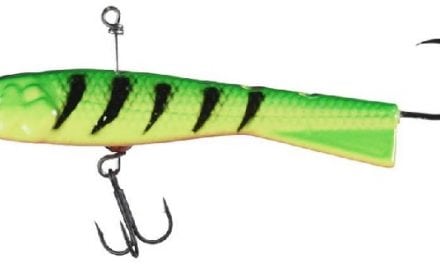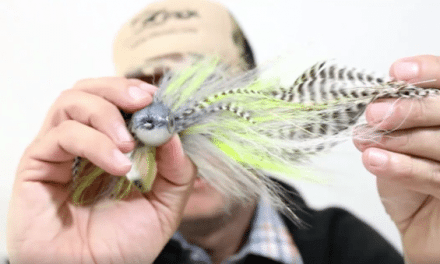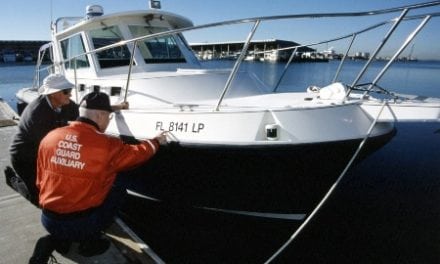These are some great Illinois fall fishing destinations you shouldn’t overlook.
Fall fishing in Illinois is always a bit different. Actually, fall fishing in most Illinois waters is a hit-and-miss affair. Some days, fall fishing can be outstanding, while other days it might seem best to stay at home.
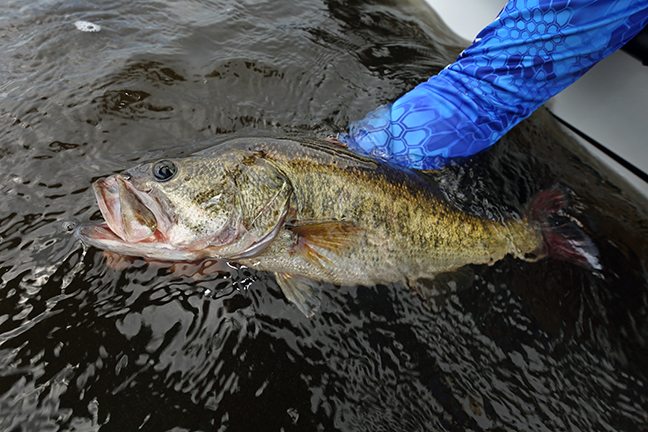
Anglers have a good chance of landing a big one as fall fishing action starts heating up. (Photo By Ron Sinfelt)
It’s also important to realize that autumn usually comes much earlier to our state’s northern reaches. In a state as tall as Illinois this can mean autumn arrives as much as a month or so earlier in the north than the south.
Another important consideration is fish population. Waters containing some of our best fish populations often produce the best fall fishing
In fact, there are always a few locations that seem to provide the best fall fishing. In recent years, this has meant heading to some of our larger bodies of water.
As a general rule, fall typically means good fishing at each of Illinois’ large Corps of Engineers impoundments. It seems like fish residing in these lakes put on the feedbag during the autumn months.
REND LAKE
Illinois Department of Natural Resource’s fisheries biologist Mike Hooe predicts another big year for Rend Lake anglers. In fact, Rend Lake anglers are likely to have one of their best years ever. This, too, can mean some outstanding fall fishing.
As the fisheries manager in charge of the sprawling Rend Lake complex, each year he is charged with announcing the coming year’s fishing prospects for this location. While the outlook has been bright for the past few years, this year looks even better.
Hooe’s 2017 Rend Lake fishing prospects lists his outlook as “much improved for certain species!” According to the report, the crappie population has changed very little from last year.
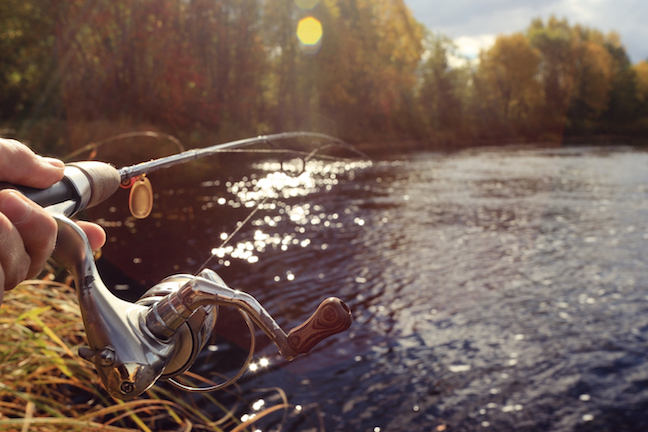
Fall fishing in Illinois. (Shutterstock image)
“Best of all, with stable growth rates, the size structure of the population should improve even further in the coming year,” he said. “Crappie reproduction was strong in 2016 for the fourth consecutive year.”
For 2017, Hooe reported that crappies measuring 10 to 12 inches in length and averaging 1/2 to over one pound will be abundant enough to provide some quality angling opportunities. He said crappie 8 to 10 inches in length are also abundant and will contribute to the creel.
“Regulations will remain unchanged in 2017, but the population will be monitored closely,” he noted.
Still, it is largemouth bass where the greatest improvement lies. Hooe said the size structure of the bass population has improved over the past year. He noted that data from the most recent population survey show all population indices remained within the target goals and the condition of all sizes of fish is excellent.
“The percentage of the population exceeding the 14-inch minimum length limit increased 36 percent,” he said. “Currently 38 percent of the adult bass population exceeds the 14-inch minimum length limit.”
He also said the excellent bass body condition is the direct result of another large shad population. With the abundant food supply, he thinks bass growth rates should be excellent.
LAKE SHELBYVILLE
Lake Shelbyville is yet another location not to be overlooked as a fall fishing destination.
Several previous years of high water typically spells good fishing in most major reservoirs. Despite good fishing for several species at Lake Shelbyville, several previous high water periods have not contributed all that much to the good fishing.
Few Lake Shelbyville anglers can deny that high water conditions have been fairly common at this location. Unfortunately, many fish populations do not appear positively impacted by this situation.
As an important note, Hooe noted the collection rate for most fish species was much lower than expected. This was likely due to warm weather and warmer water temperatures.
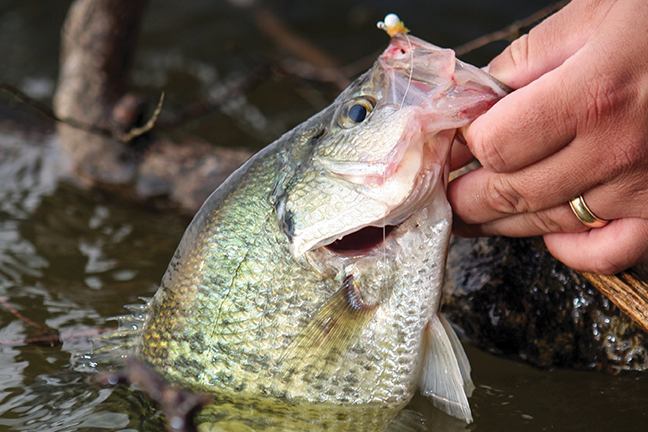
According to Lake Shelbyville fisheries biologists Mike Mounce, more good crappie fishing lies ahead for anglers heading to this lake in 2017.
Lower catch rates likely do not always indicate significant reduction in population density in most cases. Angler catch rates and size structure from 2016 and the IDNR catch rates and size structure from the fall surveys are all factored into 2017 fishing prospect ratings.
Still, the past few years have seen something of a resurgence in the crappie fishing at this lake. Shelbyville has become one of the state’s finest crappie fisheries.
According to Lake Shelbyville fisheries biologists Mike Mounce, more good crappie fishing lies ahead for anglers heading to this lake in 2017.
“A very strong year class of black crappie has established in Lake Shelbyville, with the vast majority of these fish being 8 inches long,” Mounce explained. “Although forage conditions were ideal in 2015 and 2016, these fish have not indicated that they have been able to capitalize on this opportunity.”
Mounce’s report shows the number of crappie greater than 10 inches should remain good through 2017 as fall and winter fishing reports have been very good. He thinks getting bait and lures to these larger fish through the large numbers of smaller crappies could prove difficult, unless larger lures are used.
White bass are another very popular species for Lake Shelbyville anglers. Mounce expects these fish to provide fair to good action again this year.
“The white bass population on Lake Shelbyville appears to be stabilizing since the population crash in 2012 and 2013,” he noted. “And the body condition was similar to 2014 and 2015.”
Fishing reports ranged from fair to good for white bass in 2016, which improved significantly into late fall. Mounce’s fishing prospects for white bass are expected to be similar to 2016 and are rated fair to good for the number of fish available and excellent for size structure in 2017.
The story regarding largemouth bass is still a bit confusing. However, there are some signs of improvement.
“Despite good natural reproduction and recruitment in most recent years, the recruitment of 14- to 15-inch largemouth bass to larger sizes has been much lower than expected,” Mounce said. This is likely due to largemouth bass virus, he noted.
“From survey data, the average legal-size bass is expected to be 15.5 inches and weigh about 2.1 pounds in spring 2017,” the biologist added. “For these reasons, the largemouth bass fishing prospects for 2017 are projected to be fair to good for the number of fish available and fair for size structure of the population with potential for improvement.”
When it comes to fish, Lake Shelbyville may be best known for its walleye and sauger populations. Mounce is looking for these species to provide good action in 2017.
“As with many species, walleye collection rates were poor in the standardized fall and stocking success surveys, however fishermen catch rates were good in spring and summer and late fall in 2016,” he said. “Fish measuring over 31 inches were reportedly caught in both the lake and spillway.”
And with sauger, Mounce said previous introductory stockings of this species, from 2006 through 2010, have contributed significantly to the fishery in past years.
CARLYLE LAKE
There’s a new sheriff in town in the form of a new fisheries biologist for Carlyle Lake. And, anglers should find some exciting angling action for many species if his fishing outlook proves accurate.
While Fred Cronin’s name is fairly familiar to those who know our fisheries biologists, he is new to the position of Carlyle Lake fisheries biologist. And, when combined with his very capable predecessor Rob Maher, things are looking up for this particular body of water.
Unfortunately, the current outlook for largemouth bass is likely among the greatest disappointments at this time. Cronin said overall catch rates for largemouth bass were somewhat disappointing from the 2016 survey.
“Catches decreased from 27 fish-per-hour in 2015 to 16 fish-per-hour in 2016,” Cronin explained. “This rate is far short of the 65 fish-per-hour observed in 2013, but the size structure of the fish that were collected remained good.”
He said 26 percent of the stock-sized fish collected were over 15 inches and should provide good angling opportunity. And, 3 percent of the stock-sized fish were over 18 inches, which should provide quality sized fish to the fishery.
“Young of the year bass were collected in greater numbers than recent years,” he added. “Twelve-percent of the bass collected in 2016 were young of the year, indicating that a good spawn occurred.”
Cronin remains optimistic these fish will provide a foundation for an improved largemouth bass population in the near future. He thinks angling opportunities during 2017 should be fair for largemouth bass.
The news regarding crappie was better — much better.
“The combined catch of white and black crappie was 47 fish-per-hour of electrofishing,” Cronin explained. “Forty-five-percent of the stock sized white crappie were over the minimum length limit of 10 inches, and 24 percent of the black crappie were over 10 inches.”
The biologist said this shows an increase in quality size fish from the previous surveys. These fish should provide an abundance of quality fishing opportunity for legal size fish.
In fact, Cronin thinks crappie fishing should be good to excellent in 2017 at Carlyle Lake.
According to Cronin, the white bass outlook is also good. He said the white bass remain very abundant and exhibit a good population structure.
According to fall population survey results, the overall catch rate was 30 fish-per-hour of electrofishing, which is down from the 72 fish-per-hour in 2015 and is a little lower than the results from the last several surveys. Still, multiple year classes were collected in 2016, including an abundance of young of the year, indicating a successful spawning effort.
“Forty-nine percent of the stock is 12 inches or greater in length and should provide good fishing opportunity,” Cronin said. “The fish are in good condition, and a 13-inch fish should average over a pound in weight.”
MAZONIA SFWA
One northern Illinois’ fall fishing destination not to be overlooked is the Mazonia State Fish and Wildlife Area. The site’s main office is located in Grundy County, southwest of Braidwood. The south unit, which includes the Ponderosa, Wilderness and Monster Lake areas, is actually located in Kankakee County north of County Highway 6 and west of the town of Essex.
The site consists of 2,679 acres of reclaimed strip-mine land that was purchased by the Illinois Department of Natural Resources from Commonwealth Edison Company.
The area consists of more than 200 impoundments ranging from less than a quarter acre to nearly 150 acres. Most all of these water areas are typified by steep drop-offs and many have maximum depths in excess of 30 feet with some twice that.
Shoreline access to most lakes and ponds is limited by extensive stands of tall reed grass. Concrete boat ramps access four of the largest lakes within the main Mazonia area.With the exception of Monster Lake, which offers year ‘round fishing opportunity, Mazonia is closed to fishing during upland game and waterfowl season. Following the completion of the hunting seasons, Mazonia reopens for ice-fishing, dependent upon ice conditions.
The various lakes provide a variety of fishing opportunities ranging from largemouth and smallmouth bass to northern pike. These are some of the most sought-after species at this location.
According to biologists, anglers in northern Illinois will find plenty of quality action coming from these locations again this year.
Also, keep in mind there are many more species that offer great promise to anglers this fall. Biologists feel crappie should offer excellent action and bass fishing should also be good. Bullhead and Gar lakes are likely the best for papermouths. Channel catfish are likely best in Gar Lake, while those seeking flathead cats will want to concentrate on Monster Lake and near the Granary Creek cut-off.
COFFEEN LAKE
Coffeen Lake is well-known to most local bass anglers but is something of a secret to those living elsewhere in the state. However, bass fishing here is something to brag about, especially in the fall.
Located southeast of Hillsboro in Montgomery County, Coffeen Lake is a power plant cooling reservoir.
Coffeen Lake has a surface area of 1,100 acres, an average depth of 18.7 feet and a maximum depth of 58 feet. The lake has nearly 50 miles of shoreline and a watershed of 11,000 acres.
Biologist have collected approximately 20 different fish species from this body of water through the years.
Known locally as one of the premier bass fishing lakes in the Midwest, Coffeen comes by this reputation for good reason.
The post 5 Top Fall Fishing Trips in Illinois appeared first on Game & Fish.

